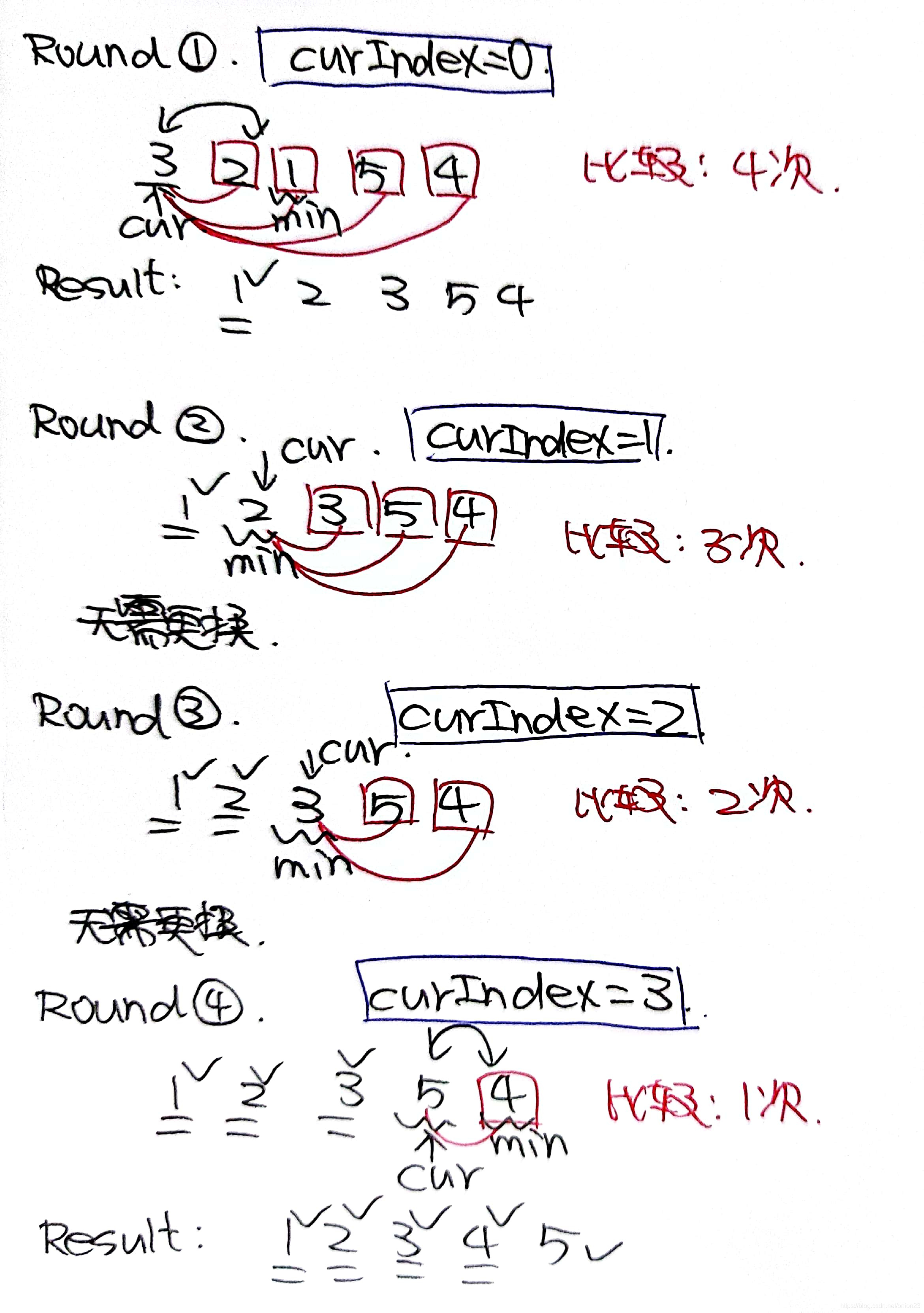算法原理
原理简述
- 在未排序序列中找到最小(大)元素,存放到排序序列的起始位置
- 再从剩余未排序元素中继续寻找最小(大)元素,放到已排序序列的末尾
- 以此类推,直到所有元素均排序完毕
过程分析
如下图所示:

分析总结
可以用两层循环来实现此算法:
第一层循环是?(curIndex = 0; curIndex < len - 1; curIndex++)
第二层循环是?(i = curIndex + 1; i < len; i++)
代码实现
// 交换两数
void swap(int *a, int *b) {
int temp = *a;
*a = *b;
*b = temp;
}
// 选择排序
void selectionSort(int arr[], int len) {
int curIndex = 0;
int minIndex = 0;
int i = 0;
for (curIndex = 0; curIndex < len - 1; curIndex++) {
minIndex = curIndex;
for (i = curIndex + 1; i < len; i++) {
if (arr[minIndex] > arr[i]) {
minIndex = i;
}
}
swap(&arr[curIndex], &arr[minIndex]); // 交换
}
}时间复杂度
与冒泡排序相似,假设需要排序的数组长度为n,则:
该算法中循环语句执行总次数:.
时间复杂度取 T(n) 最高次项,即?.